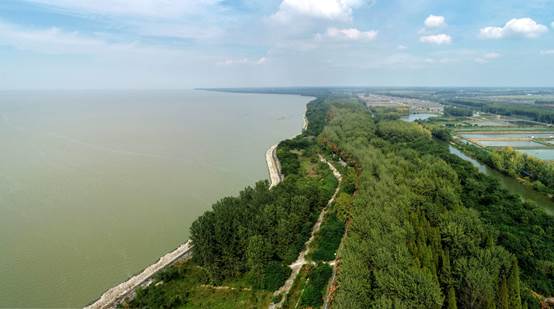In the Eastern Han Dynasty, to prevent the Huai River from moving east and trigging a flood, in the 5th year of Jianan’s reign in the Eastern Han Dynasty (200 A.D.), Chen Deng, the Governor of Guangling (now Huaian), began to build Gaojia Weir, which was exactly the rudiment of Hongze Lake Embankment. During the reign of Emperor Yongle in the Ming Dynasty, Gaojia Weir was renovated and formed the present Hongze Lake. In the 7th year of Wanli’s reign (1579), the earth weir was converted into a stone wall, heightened and reinforced. It extended 25 kilometers to Yuecheng southward. At this point, the total length of the embankment was 42 kilometers. During the reign of Emperor Kangxi in the Qing Dynasty, the embankment was extended to Jiang Dam, and stone walls were built to protect the slope. By the reign of Emperor Qianlong, this huge project lasted 171 years and a 70-kilometer-long embankment was built. Hongze Lake Embankment, the longest ancient weir in the world was thus completed.
Due to the continuous reinforcement and heightening of the floodwall along the east bank of Hongze Lake in previous dynasties, the water level of Hongze Lake has risen constantly, thus forming the famous “hanging lake”. It was estimated that the base of Hongze Lake was about 10 meters above sea level, while the ground to the east of Hongze Lake Embankment was only 4-8 meters above sea level. Thus, there was a folk rhyme in ancient times, that is, “should Gaojia Weir collapse, Qing and Huai (formerly Qingjiang City and Huai’an Prefecture) wouldn’t be able to meet each other.”










 Public Security Filing No.:321324402000556
Public Security Filing No.:321324402000556